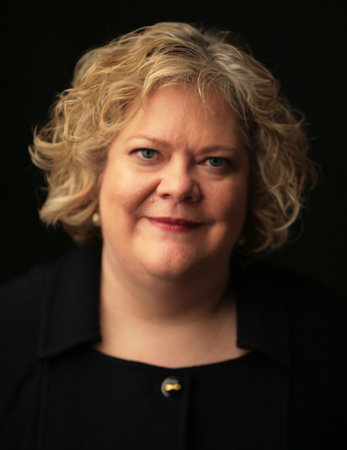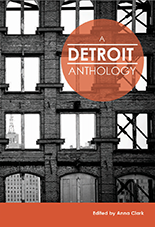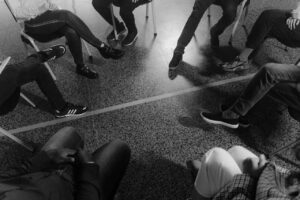A Detroit Anthology, the latest entry in our Win This Book series, is stories, art, poetry, and photographs by Detroiters about Detroit.
The editor is Anna Clark, a freelance journalist whose writing has appeared in The New York Times, The American Prospect, Grantland, on NBCNews.com, the Columbia Journalism Review, and other publications. She is the founder of Literary Detroit and can be found online at www.annaclark.net and on Twitter@annaleighclark.
In the first of a two-part conversation yesterday, we spoke with her about the philosophy behind the book. Today, we look at the practicalities of publishing.
We’d love some tips for journalists who might be considering a project like this in their cities. What are three or four pieces of advice?
I hope people jump on this! I’d love to read their books. Some thoughts:
Diversity matters so much. Cities derive their power and resonance out of the diverse communities inside it. This anthology would be of no interest if it was just a book full of people like Anna. It does take extra work to reach beyond our immediate networks, and to build credibility for why this is a project that people worth their trust. But anything less than that is just not going to make for a good book.
Begin with a hypothesis, not a conclusion. If I started out with a fixed idea about what the finished anthology should look like, the book would read like a closed, suffocated system. It would be boring. I certainly had some starting intentions when I began pulling the anthology together, but bringing a curious and questioning attitude to the project made it possible for the book to develop in an organic and interesting way.
That’s what happened in bringing in the poetry that I didn’t initially anticipate. It also happened when I noticed that what Detroiters wanted to write about, again and again, came down to neighborhoods — their experiences with homes and family businesses. There was far less about the auto industry and sports than I expected. Those proportions are reflected in the book.
Ultimately, I think editing an anthology comes down to just being a good listener. That work is far more fun than simply filling in the blanks of this book with whatever my pre-emptive expectations were.
Communicate as directly, honestly, and compassionately as possible. I hated sending rejections for the anthology, especially for pieces that were THIS CLOSE to being included. But I learned quickly that dragging my heels on sending those emails, or being mealy-mouthed in what I was saying, was no use to anyone. Everyone is served best by just being clear.
How much of the process of putting the book together was creative, and how much of it was business? Which skills did you lack when you started, and what have you learned in doing it?
Ooo, this is a good question. Thanks to the incredibly agile work of Belt, the anthology was largely a creative process for me. The publisher is so great in managing the business end.
Of course, as these things go, business isn’t entirely separate. Being the one on the ground in Detroit, it’s my job to notice where there are shops or events that should include this anthology. I’ve had to have my “promotions” hat on nonstop. Having so many contributors, I’ve also had the role of making sure their work is treated fairly, and their questions are answered.
Oh, and this anthology was also my first serious experience in wrangling with copyright permissions. Some pieces in the book appeared in earlier forms elsewhere, and I had to hustle to make sure including them in this book didn’t violate anyone’s anything. It was a good learning experience, skills I need to have and so on. But honestly, that part of the work was utterly joyless for me.
One last thing: book printers. This was an interesting story. Our publisher had our book and the Cincinnati anthology scheduled to be printed at the same time.
The Cincinnati anthology has comic in it that figures a cartoon figure of a naked man. When the printer noticed it and refused to print the book, citing its “morals” clause — and this happened just a few weeks before publication, after all the paperwork was signed and book release parties planned. The Cincinnati book had to find another printer, of course, and we had a decision about what to do with the Detroit anthology. Print it as planned and be released on schedule with a printer who behaved in this nutty way, or go to the new printer with the Cincinnati book — a printer that was then an unknown quantity — and have our release delayed too?
I wasn’t sure what the right thing to do was. I hemmed and hawed. But really, we had almost zero time to think about it. We went with the second option — with results that I loved, happily. But it was Anne Trubek at Belt who helped me learn, by her own example, how to make swift decisions like this. Sometimes you just don’t have time to weigh all the pros and cons — my preferred way to make decisions. You just pick a route, and you make that route a great one as you go. That’s all.
Finally, how are sales? What’s the future for A Detroit Anthology? Any next moves for you?
I’m not sure what the specific numbers are, but the book did just go into a second printing about six months after publication. I’m glad for that. What I love best is the book landing in people’s hands, and inspiring them to tell their own stories about the city — the kind of candid, funny, spine-shivery stories that reveal the true beating heart of this city. I love listening to those stories. My hope for the book’s future is that it continues along that path, creating opportunities for people to connect with this place and with each other.
For me personally, I’ll keep on keepin’ on with the freelance writer life. I’m also working on a book about the literary culture of Michigan that will come out next year with The History Press — a mix of reportage, literary analysis, and history. It’ll cover, for example, Joyce Carol Oates’ Detroit fiction, the blaxploitation novels ofDonald Goines, and the Nick Adams stories of Ernest Hemingway. This project does mean I have to dive back into the sewers of permission-seeking again — archival photos and all. But on the plus side: the writing and reading parts are both crazy fun.











